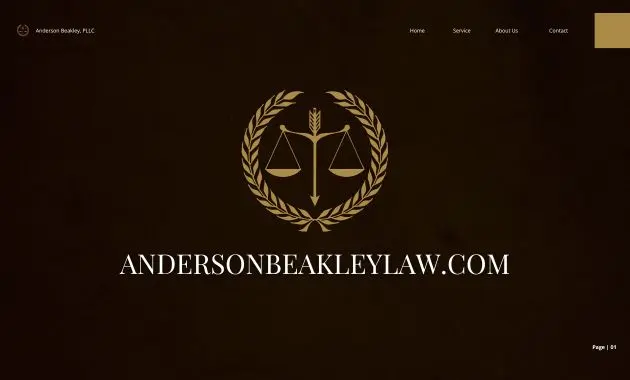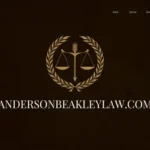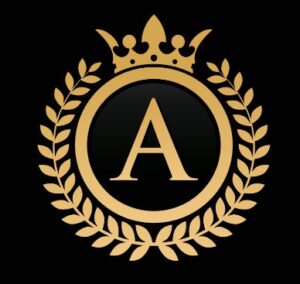Product liability law stands as a crucial pillar of consumer protection, safeguarding individuals from harm caused by defective products. This intricate area of law establishes a balance between the rights of consumers and the responsibilities of manufacturers, ensuring accountability for defective goods and fostering a culture of safety.
The principles of product liability law are deeply rooted in the fundamental notion that manufacturers have a duty to provide safe products to consumers. This duty extends beyond simply avoiding intentional harm, encompassing the obligation to design, manufacture, and distribute products that meet reasonable safety standards.
Emerging Issues in Product Liability Law
Product liability law is constantly evolving to address new challenges presented by technological advancements, complex product designs, and changing consumer expectations. This section explores some of the most pressing emerging issues in product liability law, focusing on the impact of new technologies, the challenges of holding manufacturers liable for complex products, and the potential for changes in the law to address these issues.
Also Read
Impact of New Technologies on Product Liability Law
The rapid development of new technologies, such as artificial intelligence (AI) and autonomous vehicles, presents unique challenges for product liability law. These technologies often involve complex systems and algorithms that are difficult to understand and analyze, making it challenging to determine the cause of a product defect or malfunction. For example, in the case of an autonomous vehicle accident, it may be difficult to determine whether the accident was caused by a software error, a hardware failure, or a human error in the design or operation of the vehicle.
- AI and Machine Learning: AI and machine learning systems are increasingly being incorporated into products, raising questions about liability when these systems malfunction or make incorrect decisions. For instance, a self-driving car that makes a fatal error due to a malfunctioning AI system raises questions about the liability of the car manufacturer, the AI developer, or both.
- Autonomous Vehicles: Autonomous vehicles present a unique challenge for product liability law. If an autonomous vehicle is involved in an accident, it may be difficult to determine who is liable: the manufacturer, the software developer, the operator, or a combination of these parties. Furthermore, the question of who is responsible for the safety of pedestrians and other road users when autonomous vehicles are involved in accidents is a critical issue that needs to be addressed.
- Internet of Things (IoT): The proliferation of connected devices in the IoT raises new concerns about product liability. For example, a smart home device that is hacked and used to commit a crime could lead to liability claims against the manufacturer, the software developer, or the network provider.
Challenges of Holding Manufacturers Liable for Complex Products
Modern products often involve complex designs, intricate manufacturing processes, and sophisticated software systems. This complexity makes it challenging to identify the cause of a product defect or malfunction and to establish liability against the manufacturer.
- Complex Design and Manufacturing: Modern products, such as aircraft, medical devices, and pharmaceuticals, often involve intricate designs and manufacturing processes that are difficult to understand and analyze. This complexity can make it challenging to identify the source of a product defect and to establish liability against the manufacturer.
- Software-Intensive Products: Many modern products rely heavily on software, which can be difficult to test and debug. Software errors can lead to product defects that are difficult to trace and attribute to specific causes, making it challenging to establish liability against the manufacturer.
- Global Supply Chains: Many products are manufactured in complex global supply chains, involving multiple manufacturers and suppliers. This can make it difficult to identify the responsible party for a product defect and to establish liability against the manufacturer.
Potential for Changes in Product Liability Law
The emerging issues discussed above have prompted calls for changes in product liability law to address the unique challenges posed by new technologies and complex products. Some potential changes include:
- Shifting Liability: There is a growing debate about whether the traditional strict liability standard, which holds manufacturers liable for any defect in their products, is appropriate for products involving complex technologies. Some argue that a negligence standard, which requires proof of fault, may be more appropriate for these products.
- Expanding the Scope of Liability: There is also a debate about whether the scope of liability should be expanded to include parties involved in the development and deployment of complex technologies, such as software developers and AI engineers. This would potentially make these parties liable for defects in products that incorporate their technologies.
- Enhancing Consumer Protections: There is a growing need for enhanced consumer protections in the context of new technologies and complex products. This could include requiring manufacturers to provide more information about the safety and performance of their products, as well as to implement better systems for product recall and safety updates.
9. Product Liability Insurance
Product liability insurance is a crucial aspect of risk management for businesses involved in manufacturing or selling products. It safeguards businesses against financial losses arising from claims alleging that their products caused harm to consumers. This insurance coverage is designed to protect businesses from the significant financial burden associated with product liability lawsuits.
Types of Product Liability Insurance
There are various types of product liability insurance available, each offering different levels of coverage and protection. Understanding the nuances of each type is essential for businesses to choose the most appropriate coverage for their specific needs.
- General Liability Insurance: This is a broad coverage that provides protection against a wide range of liabilities, including product liability. It typically offers lower limits than specialized product liability insurance and may have broader exclusions.
- Product Liability Insurance: This type of insurance specifically focuses on protecting businesses against claims arising from defective products. It provides comprehensive coverage for legal defense costs, settlements, and judgments related to product liability lawsuits.
- Umbrella Liability Insurance: This insurance acts as an additional layer of coverage above existing general liability or product liability policies. It provides higher limits of coverage and broader protection against significant liability claims.
- Errors and Omissions (E&O) Insurance: This type of insurance protects businesses against claims alleging negligence or errors in professional services, including product design or development. It is particularly relevant for businesses involved in manufacturing complex products.
| Type of Insurance | Coverage | Limits | Exclusions | Cost Factors |
|---|---|---|---|---|
| General Liability Insurance | Covers a wide range of liabilities, including product liability | Typically lower limits than specialized product liability insurance | May exclude certain types of product liability claims, such as those arising from intentional acts or known defects | Factors influencing cost include industry, business size, and claims history |
| Product Liability Insurance | Specifically covers claims arising from defective products | Higher limits than general liability insurance | May exclude certain types of claims, such as those arising from intentional acts or known defects | Factors influencing cost include industry, business size, product complexity, and claims history |
| Umbrella Liability Insurance | Provides additional coverage above existing general liability or product liability policies | Higher limits than underlying policies | May exclude certain types of claims, such as those arising from intentional acts or known defects | Factors influencing cost include underlying policy limits, business size, and claims history |
| Errors and Omissions (E&O) Insurance | Covers claims alleging negligence or errors in professional services, including product design or development | Varies depending on the specific policy | May exclude certain types of claims, such as those arising from intentional acts or known defects | Factors influencing cost include industry, business size, and claims history |
Importance of Product Liability Insurance
Adequate product liability insurance is essential for businesses that manufacture or sell products. It provides crucial financial protection against the significant costs associated with product liability claims.
- Product liability claims can arise from various sources, including:
- Defective design: The product was designed with a flaw that made it dangerous.
- Manufacturing defect: The product was manufactured incorrectly, leading to a defect.
- Failure to warn: The manufacturer failed to warn consumers about potential risks associated with the product.
- The potential financial consequences of a product liability claim can be substantial, including:
- Legal fees: Covering legal expenses to defend against the claim.
- Settlement costs: Paying out-of-court settlements to resolve the claim.
- Damage awards: Compensating the claimant for injuries or damages caused by the defective product.
- Product liability insurance can help businesses mitigate these financial risks by:
- Covering legal defense costs: Providing financial assistance to defend against product liability lawsuits.
- Paying settlements or judgments: Protecting businesses from the financial burden of settling or losing a product liability claim.
- Providing peace of mind: Reducing the stress and uncertainty associated with product liability claims.
Protection from Financial Losses, Product liability law
Product liability insurance provides a crucial safety net for businesses facing product liability claims. It can help protect businesses from significant financial losses and maintain their reputation.
- Example Scenario: A small manufacturing company produces a line of kitchen appliances. A customer suffers burns from a malfunctioning toaster. The customer sues the company for product liability, alleging that the toaster was defectively designed. The company’s product liability insurance policy covers the legal defense costs, settlement costs, and any damage awards. Without insurance, the company could face significant financial hardship and potential bankruptcy.
- Impact of Adequate Insurance Coverage: In this scenario, the company’s insurance policy would provide financial protection against the financial burden of the lawsuit. This allows the company to focus on resolving the issue and maintaining its reputation, rather than worrying about financial ruin.
- Maintaining Reputation and Customer Trust: Product liability insurance can help businesses maintain their reputation and customer trust. By demonstrating a commitment to product safety and financial responsibility, businesses can build confidence among consumers.
- Real-World Examples: Numerous businesses have successfully used product liability insurance to protect themselves from financial losses. For example, a major automotive manufacturer was able to resolve a product liability claim involving a faulty brake system without facing significant financial hardship due to their comprehensive insurance coverage.
- Case Study: A small toy manufacturer faced a product liability claim alleging that one of their toys caused a child’s injury. The company’s product liability insurance policy covered the legal defense costs, settlement costs, and damage awards. The insurance company also provided legal expertise and guidance throughout the process. This allowed the company to resolve the claim without facing significant financial hardship and maintain their reputation in the toy industry.
Ethical Considerations in Product Liability
Product liability law, while grounded in legal principles, also has a significant ethical dimension. This is because the core of product liability is the relationship between manufacturers and consumers, a relationship built on trust and the expectation of safety. Ethical considerations come into play when manufacturers make decisions that impact the safety of their products and consumers.
Manufacturer’s Ethical Obligations
Manufacturers have a fundamental ethical obligation to ensure the safety of their products. This obligation goes beyond simply complying with legal requirements. It involves a commitment to ethical practices that prioritize consumer well-being.
- Due Diligence: Manufacturers have a responsibility to exercise due diligence in designing, manufacturing, and distributing their products. This means taking all reasonable steps to identify and mitigate potential risks. Due diligence involves thorough research, testing, and quality control measures to ensure that products meet safety standards.
- Informed Consent: Consumers should be fully informed about the risks associated with using a product. Manufacturers have an ethical obligation to provide clear and accurate information about their products, including potential hazards and safety precautions. This includes labeling, instructions, and warnings that are easily understood by consumers.
- Right to a Safe Product: Consumers have a right to expect that products they purchase are safe for their intended use. Manufacturers have an ethical obligation to prioritize this right, even if it means sacrificing some profits. This includes avoiding the use of harmful materials, designing products with safety features, and implementing robust quality control measures.
The ethical implications of prioritizing profit over safety are significant. When manufacturers cut corners on safety to increase profits, they put consumers at risk. This can lead to serious injuries, illnesses, or even death. Furthermore, such practices can damage a company’s reputation and erode public trust.
Transparency and communication are crucial for building trust between manufacturers and consumers. By being open and honest about their products, including potential risks, manufacturers can demonstrate their commitment to consumer safety. This can help to build trust and foster a more ethical relationship between businesses and consumers.
Corporate Social Responsibility
Corporate social responsibility (CSR) is a concept that emphasizes the ethical and social responsibilities of businesses. In the context of product liability, CSR involves integrating ethical considerations into product development and manufacturing processes.
- Risk Mitigation: CSR initiatives can play a significant role in mitigating risks associated with product liability. By prioritizing ethical practices and investing in safety measures, companies can reduce the likelihood of product defects and injuries.
- Product Safety Enhancement: Companies can implement CSR initiatives to enhance product safety. This can include investing in research and development to create safer products, adopting rigorous quality control standards, and implementing robust safety testing procedures.
- Addressing Ethical Concerns: CSR allows companies to address ethical concerns related to their products. This includes being transparent about product risks, promptly addressing product defects, and providing fair compensation to consumers who have been injured by defective products.
Integrating CSR into product liability considerations can bring significant benefits. It can help companies build a strong reputation for ethical behavior, enhance consumer trust, and reduce the risk of costly product liability lawsuits. However, there are also challenges associated with integrating CSR into product liability. For example, some companies may view CSR as a cost burden, while others may struggle to balance ethical considerations with business goals.
Ethical Dilemmas in Product Liability Cases
Product liability cases often present complex ethical dilemmas. These dilemmas can involve difficult choices for both manufacturers and consumers.
Dilemma 1: Delayed Recall
Imagine a manufacturer discovers a potential safety flaw in a product. They have two options: immediately recall the product to prevent potential injuries or delay the recall to avoid financial losses.
- Manufacturer’s Perspective: Delaying the recall could save the company significant financial resources. However, it also carries the risk of causing harm to consumers. The manufacturer must weigh the potential financial losses against the potential harm to consumers.
- Consumer’s Perspective: Consumers have a right to expect that products are safe. If a manufacturer knows about a safety flaw but delays a recall, it is a breach of trust. Consumers may feel betrayed and vulnerable.
The consequences of delaying a recall can be severe. Consumers could be injured or killed, and the manufacturer could face significant legal and financial repercussions.
Dilemma 2: Misuse of Product
A consumer sues a manufacturer for product liability, claiming injury due to a defective product. The manufacturer argues that the consumer misused the product.
- Manufacturer’s Perspective: The manufacturer may argue that the product was safe for its intended use and that the consumer’s misuse caused the injury. They may feel that they are being unfairly blamed for the consumer’s actions.
- Consumer’s Perspective: The consumer may argue that they used the product as intended and that the product was defective. They may feel that the manufacturer is trying to avoid responsibility for their negligence.
This dilemma raises questions about the responsibility of manufacturers to anticipate and prevent misuse of their products. It also highlights the difficulty of determining fault in product liability cases, especially when the product’s design, manufacturing, or marketing may have contributed to its misuse.
Navigating the complexities of product liability law requires a comprehensive understanding of its various facets. From the different types of product liability claims to the defenses available to manufacturers, each element plays a vital role in determining the outcome of a case. Ultimately, product liability law serves as a powerful tool for ensuring consumer safety and promoting ethical business practices in the marketplace.
Product liability law protects consumers from defective products, ensuring manufacturers are held accountable for harm caused. While this area of law focuses on physical harm, it can intersect with financial fraud when manufacturers intentionally misrepresent their products to gain an unfair advantage. If you suspect financial fraud related to a defective product, seeking legal counsel from a Financial fraud attorney can help you understand your rights and options.
This type of legal expertise can be invaluable in uncovering fraudulent schemes and seeking compensation for financial losses stemming from defective products.




